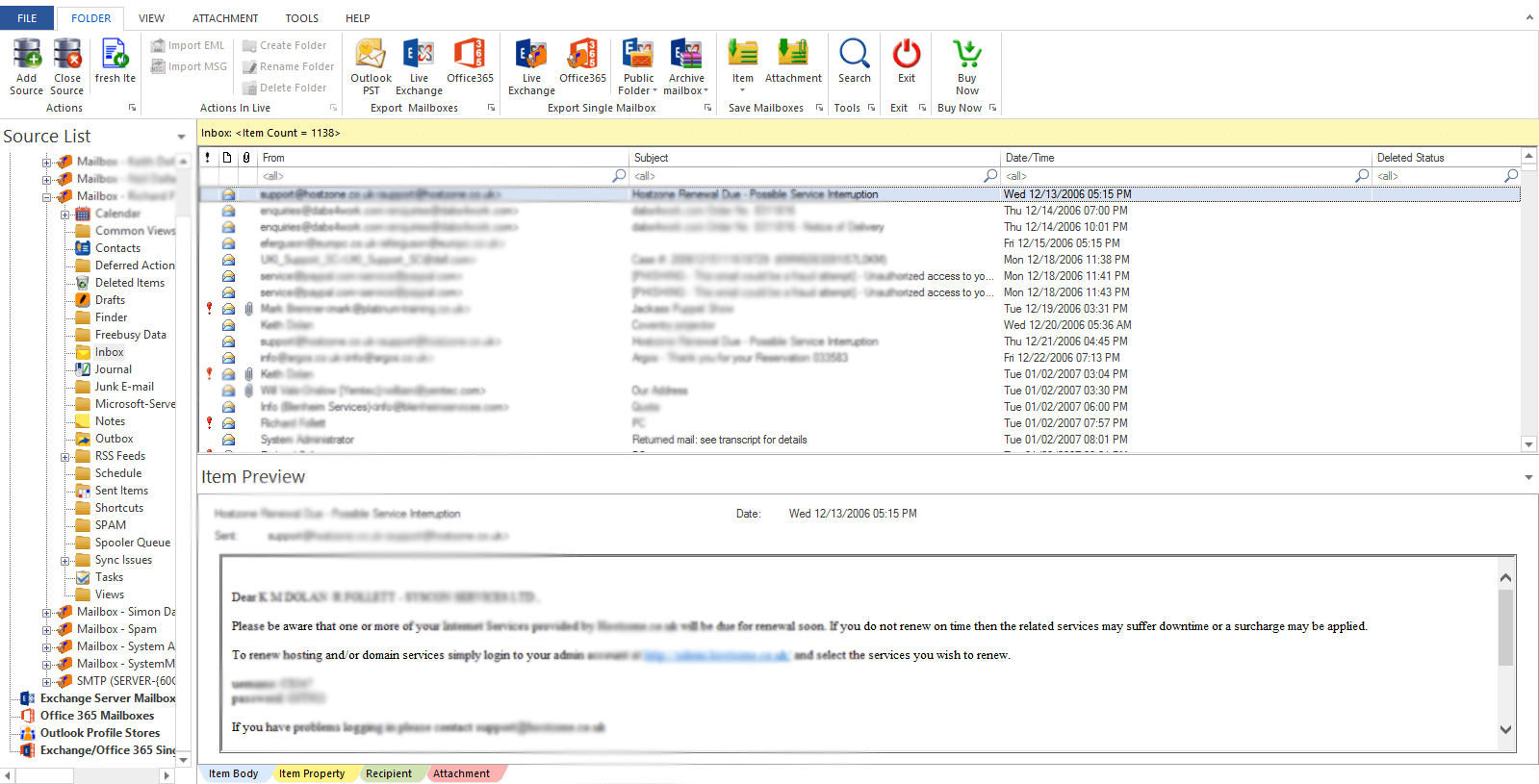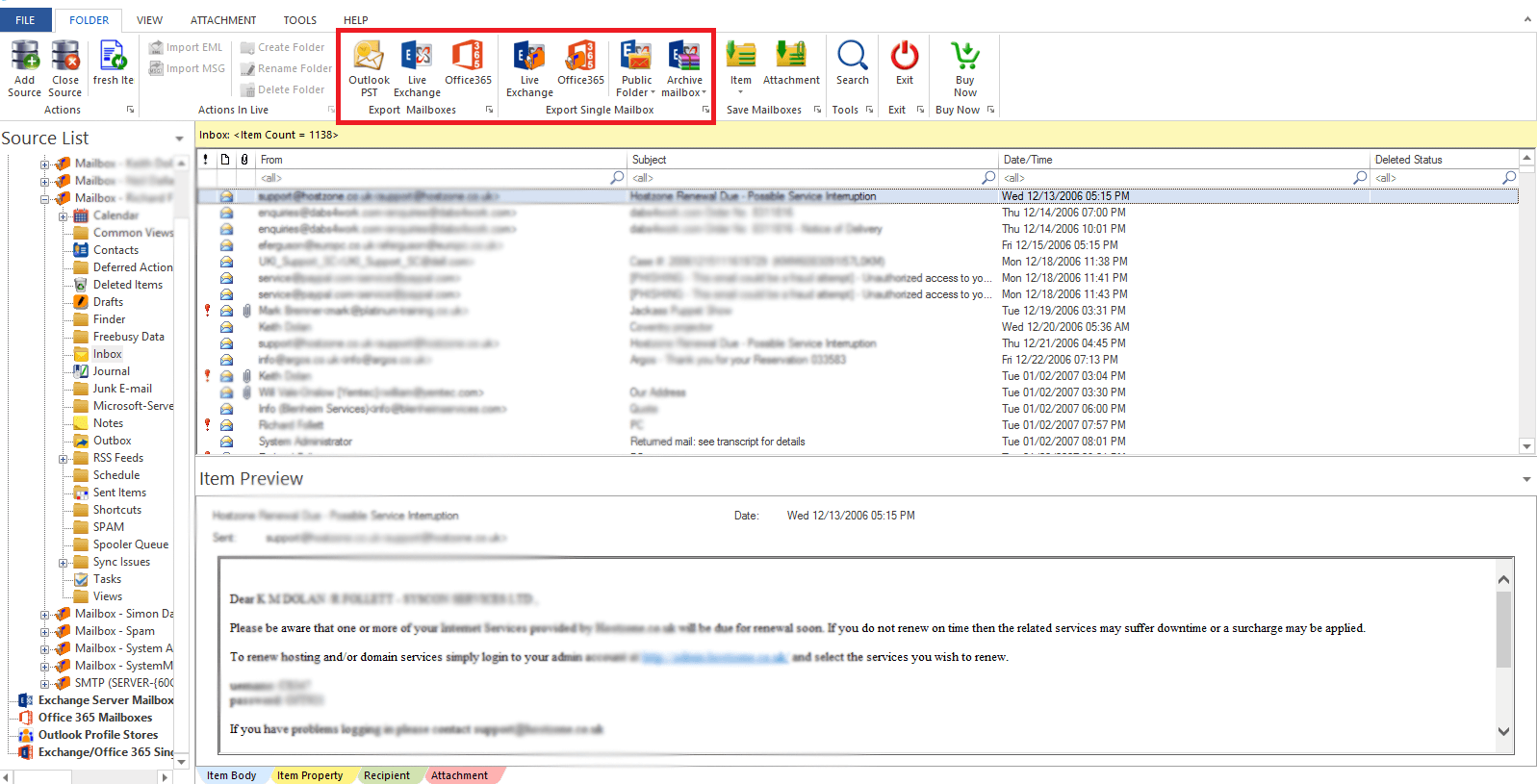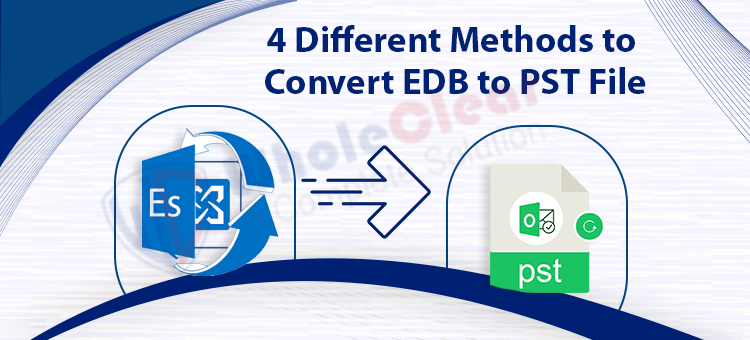EDB or Exchange Database File is an important reservoir of Exchange Server database, based on single client-server architecture and managed by Microsoft. It constitutes all data components like messages, emails, contacts, calendars, attachments, notes, tasks, etc.
In earlier MS Exchange versions like 2003 and 2000, priv1.edb and pub1.edb file is used to store data. Also, in Exchange Server 2007 and 2010, the mailbox data is saved in the .edb file named priv1.edb and the public folder database. But after Exchange 2010, both private and public folder gets merged into a file named Mailbox database which is not easy to manage. Therefore, Microsoft come up with advanced in-built options to resolve this backup issue by converting EDB files to PST files for backup purposes. Through this valuable post, we will focus on all methods that can help users to convert Exchange EDB mailbox data to PST files.
Compare EDB v/s PST: Which one is better?
EDB: EDB means Exchange Database file that carries complete mailbox data such as messages, notes, contacts, tasks, calendars, journals, and more. In one Exchange Server, there can be multiple Exchange database files.
PST: PST means Personal Storage Table that carries Outlook mailbox data such as email messages, contacts, notes, calendars, tasks, etc. Outlook creates a .pst file when it is configured with POP and saves the file to a local folder.
Why arise the need to Convert Exchange Database File to a PST file?
There could be plenty of reasons for the conversion of EDB files to Outlook PST files.
- For creating space in the Exchange Server database
- A situation may occur where the EDB file gets corrupted and you have to remove the data from the same.
- To reduce the size of the mailbox and improve the performance of the server
- Get backup a few Exchange mailboxes to the local system
- Transfer mailbox data from Exchange to other email clients
- When there is a need to retain data for some legal requirements
- To overcome damage or corruption problems of EDB file
Available Methods to Convert Exchange EDB to Outlook PST
In this part, we will discuss manual as well as professional solutions to convert EDB file items to PST file format.
Method 1. Through ExMerge Tool
ExMerge is a reliable tool to copy Exchange items to PST files. The software smoothly merges the content of Exchange data and is an ideal tool for the conversion of EDB mailbox items to PST files. So, if you are looking for a method to open EDB files without Exchange Server then follow this method. However, this method is not compatible with the latest Exchange Server versions and become outdated.
Method 2. Through Exchange Management Shell
Exchange Management Shell is inbuilt on Windows PowerShell and offers a powerful command line interface to access the data and perform Exchange administration tasks.
Note: Before you move ahead, remember that your PST file is saved on a shared network folder.
C:\Users\AppData\Roaming\Output Messenger\EFAAA\Received files
Now, perform the below-mentioned command for EDB file export to PST file.
- Get the list of mailboxes in the Exchange database with this command:
Get-MailboxStatistics-Database<DatabaseName>
- Now, run this command for EDB data items to PST conversion.
New-MailboxExportRequest-Mailbox <mailbox name> – FilePath\ExchangeBackup\PST\Mailboxname.PST
D:\Download: This command will permit users to extract PST from Exchange Server 2016 EDB file and save it to the local system. Make sure to pick the shared folder as a saving directory
- To check mailbox export request status, use this command:
Get-MailboxExportRequest
- After completing the export process, cancel the export request with this command:
Remove-MailboxExportRequest-Identify <name of the export request>
Method 3. Through Exchange Admin Center
This is a direct and widely used solution to convert Exchange EDB file items to a PST file.
- Start Exchange Admin Center as admin and login.
- Hit the Permissions tab in the opening dashboard and choose admin roles
- Go to Recipient Management and hit (+)
- Under the Roles option, click on the (+) option in the Role Group
- Pick Mailbox Import Export Role and hit Add Now, click OK
- Go to Recipients and choose Mailboxes Now, choose the mailbox you want to export
- Hit Menu (three-dot) and pick the option Export to PST file
- Now, browse the mailbox which you need to export
- Provide a path for the shared folder
- A select mailbox that will get an email after successful conversion
- Finally, press the Finish button to complete the export process
Method 4. Through Professional Program
If all three solutions won’t provide you with a complete solution for EDB mailboxes to PST conversion. Then, don’t worry! We have an expert solution for you that is highly tested & provides 100% accurate results. By using the WholeClear EDB to PST Converter Tool, users can conveniently convert multiple EDB files to Outlook PST, MSG, EML, and various file formats. Even it is competent enough to export EDB files to Office 365 and Live Exchange. Not only this but also it is loaded with numerous advanced features that make EDB to MS Outlook Conversion safer & simpler for all users. It contains varied filters and PST file splitting options in case the resultant PST file is huge in size. Not only normal but you can extract data to PST files from corrupt EDB files with it. You can fully examine this utility with the demo edition by converting the first 50 items per folder from Exchange Server to MS Outlook 2021, 2019, 2016, 2013, etc.
Stepwise working to Online Convert Exchange to Outlook PST:
- Start and run the recommended program on any windows machine.
- Now, add single or multiple EDB files depending on your needs.
- Get all items preview on the screen inside the EDB file.

- Pick Export option – PST and set destination for PST file.

- Now, hit the Convert button and get a complete report of conversion on the screen.
You can analyze that in these 6 easy steps, you can export EDB mailbox data items into PST file format.
Conclusion
Nowadays, converting the Exchange Server database to Outlook becomes necessary for many users. Thus, they look for converting Exchange Server data items into MS Outlook. Through this post, we have covered the best and most effective solutions for conversion. Check out these solutions and choose the one that suits you the best.

